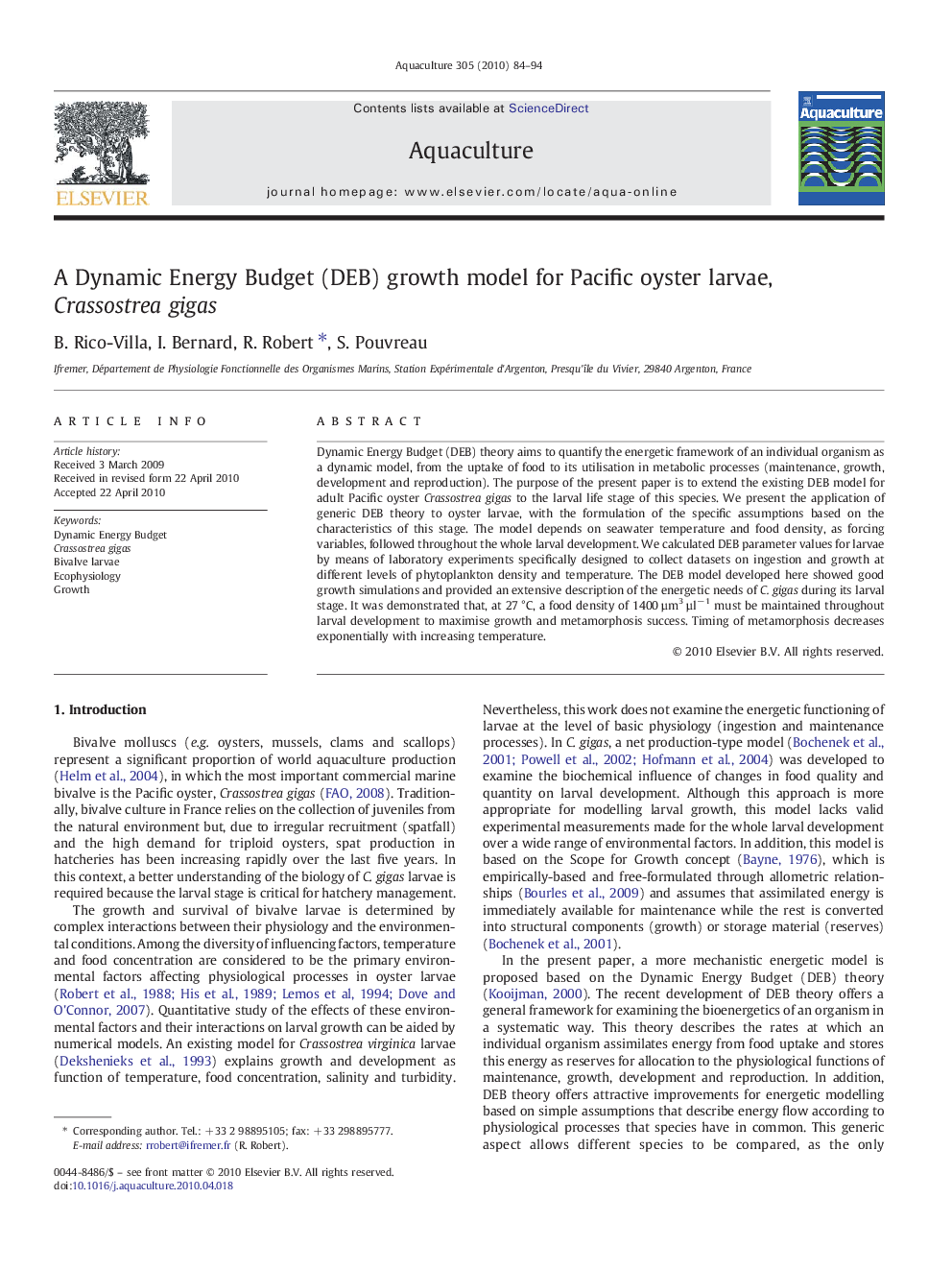| Article ID | Journal | Published Year | Pages | File Type |
|---|---|---|---|---|
| 2423532 | Aquaculture | 2010 | 11 Pages |
Dynamic Energy Budget (DEB) theory aims to quantify the energetic framework of an individual organism as a dynamic model, from the uptake of food to its utilisation in metabolic processes (maintenance, growth, development and reproduction). The purpose of the present paper is to extend the existing DEB model for adult Pacific oyster Crassostrea gigas to the larval life stage of this species. We present the application of generic DEB theory to oyster larvae, with the formulation of the specific assumptions based on the characteristics of this stage. The model depends on seawater temperature and food density, as forcing variables, followed throughout the whole larval development. We calculated DEB parameter values for larvae by means of laboratory experiments specifically designed to collect datasets on ingestion and growth at different levels of phytoplankton density and temperature. The DEB model developed here showed good growth simulations and provided an extensive description of the energetic needs of C. gigas during its larval stage. It was demonstrated that, at 27 °C, a food density of 1400 µm3 µl− 1 must be maintained throughout larval development to maximise growth and metamorphosis success. Timing of metamorphosis decreases exponentially with increasing temperature.
